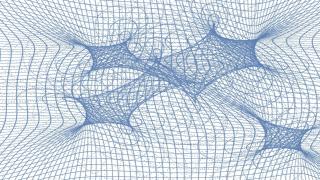Bibcode
Fian, C.; Jiménez-Vicente, J.; Mediavilla, E.; Muñoz, J. A.; Chelouche, D.; Kaspi, S.; Forés-Toribio, R.
Bibliographical reference
The Astrophysical Journal
Advertised on:
9
2024
Journal
Citations
3
Refereed citations
3
Description
We introduce a novel method to derive rotation curves with light-day spatial resolution of the inner regions of lensed quasars. We aim to probe the kinematics of the inner part of the broad-line region by resolving the microlensing response—a proxy for the size of the emitting region—in the wings of the broad emission lines. Specifically, we assess the strength of the microlensing effects in the wings of the high-ionization lines Si IV and C IV across various velocity bins in five gravitationally lensed quasars: SDSS J1001+5027, SDSS J1004+4112, HE 1104‑1805, SDSS J1206+4332, and SDSS J1339+1310. Using Bayesian methods to estimate the dimensions of the corresponding emission regions and adopting a Keplerian model as our baseline, we examine the consistency of the hypothesis of disklike rotation. Our results reveal a monotonic, smooth increase in microlensing magnification with velocity. The deduced velocity–size relationships inferred for the various quasars and emission lines closely conform to the Keplerian model of an inclined disk. This study provides the first direct evidence of Keplerian rotation in the innermost region of quasars across a range of radial distances spanning from ∼5 to 20 lt-days.
Related projects

Relativistic and Theoretical Astrophysics
Introduction Gravitational lenses are a powerful tool for Astrophysics and Cosmology. The goals of this project are: i) to obtain a robust determination of the Hubble constant from the time delay measured between the images of a lensed quasar; ii) to study the individual and statistical properties of dark matter condensations in lens galaxies from
Evencio
Mediavilla Gradolph